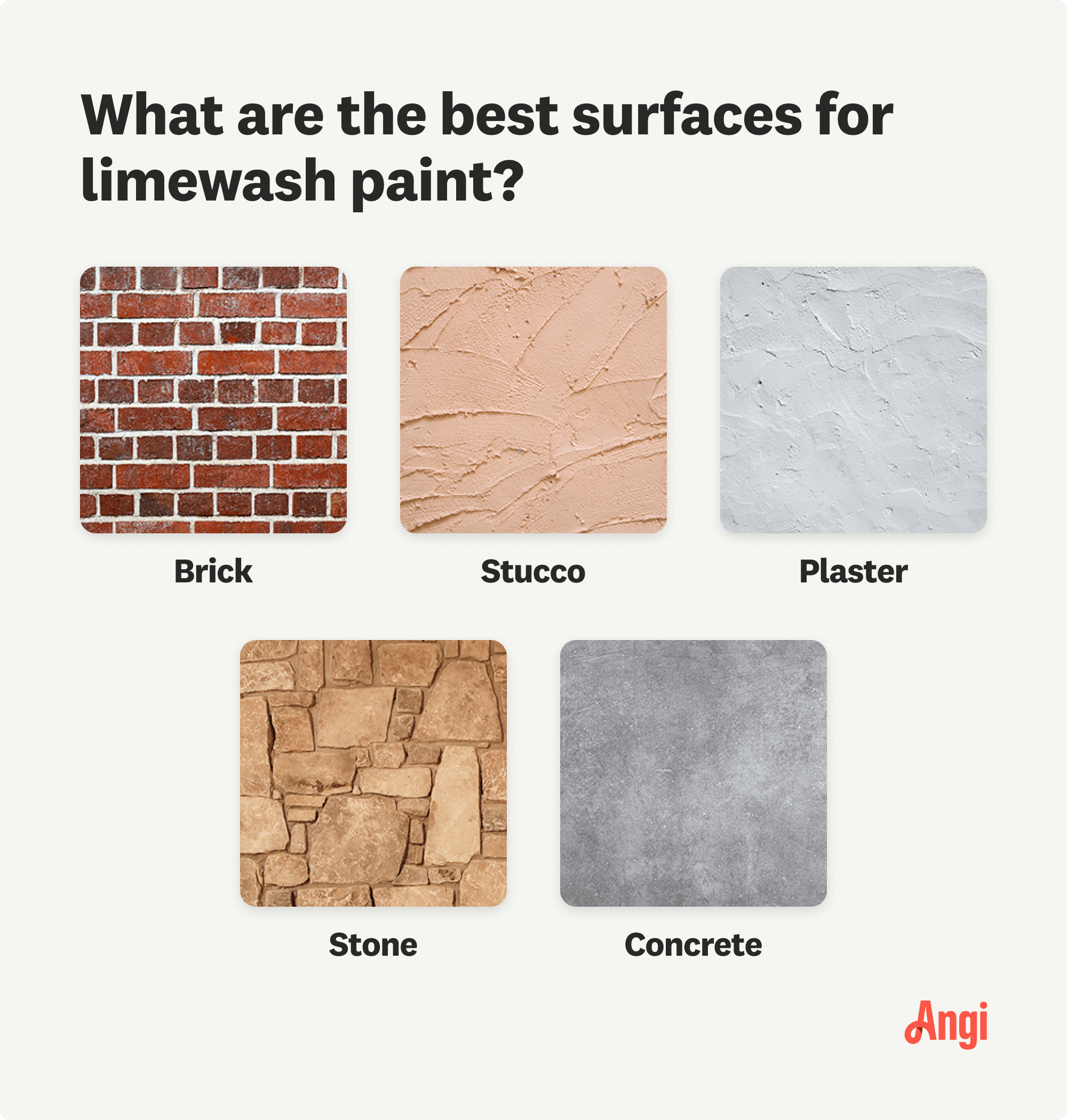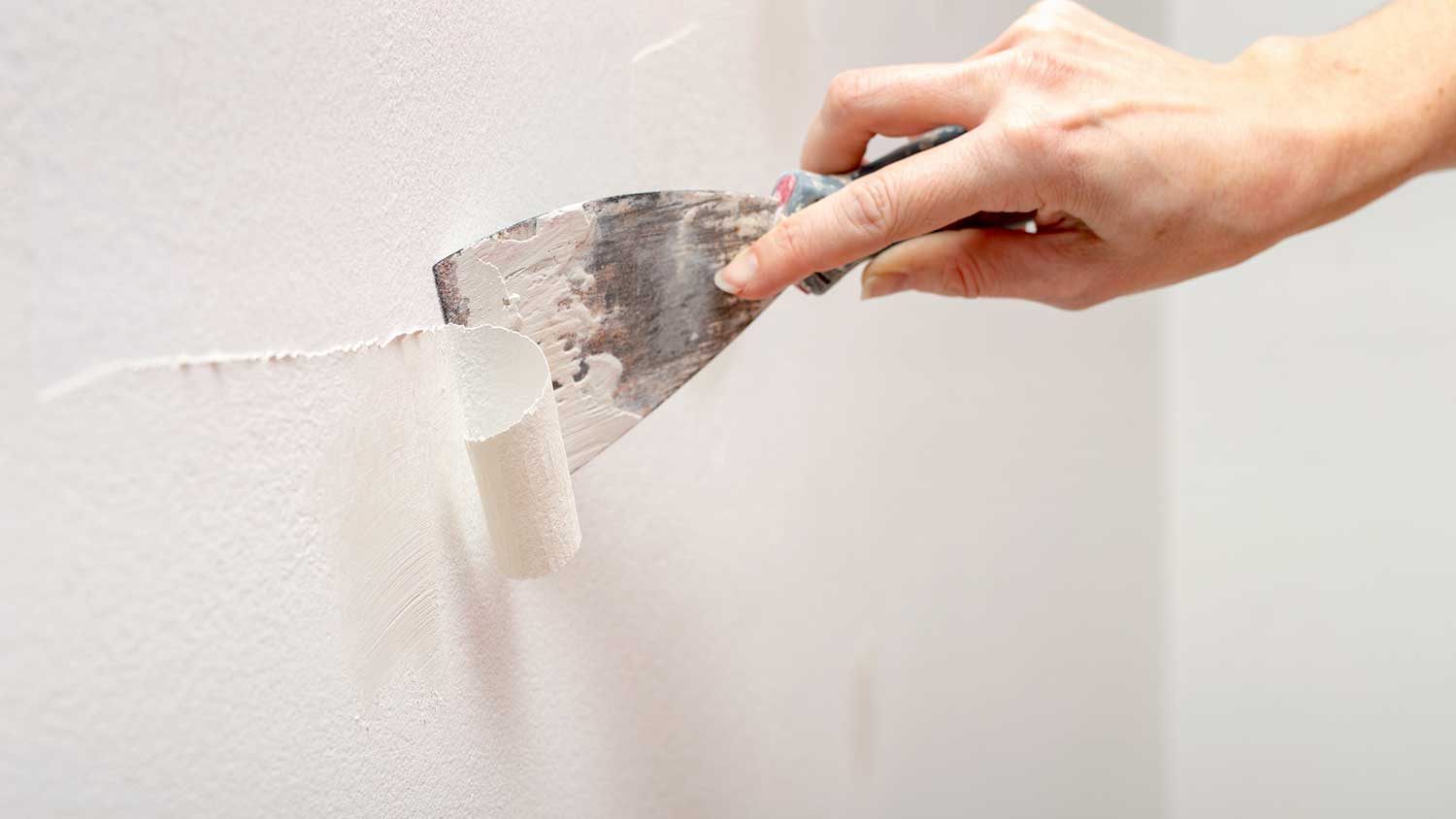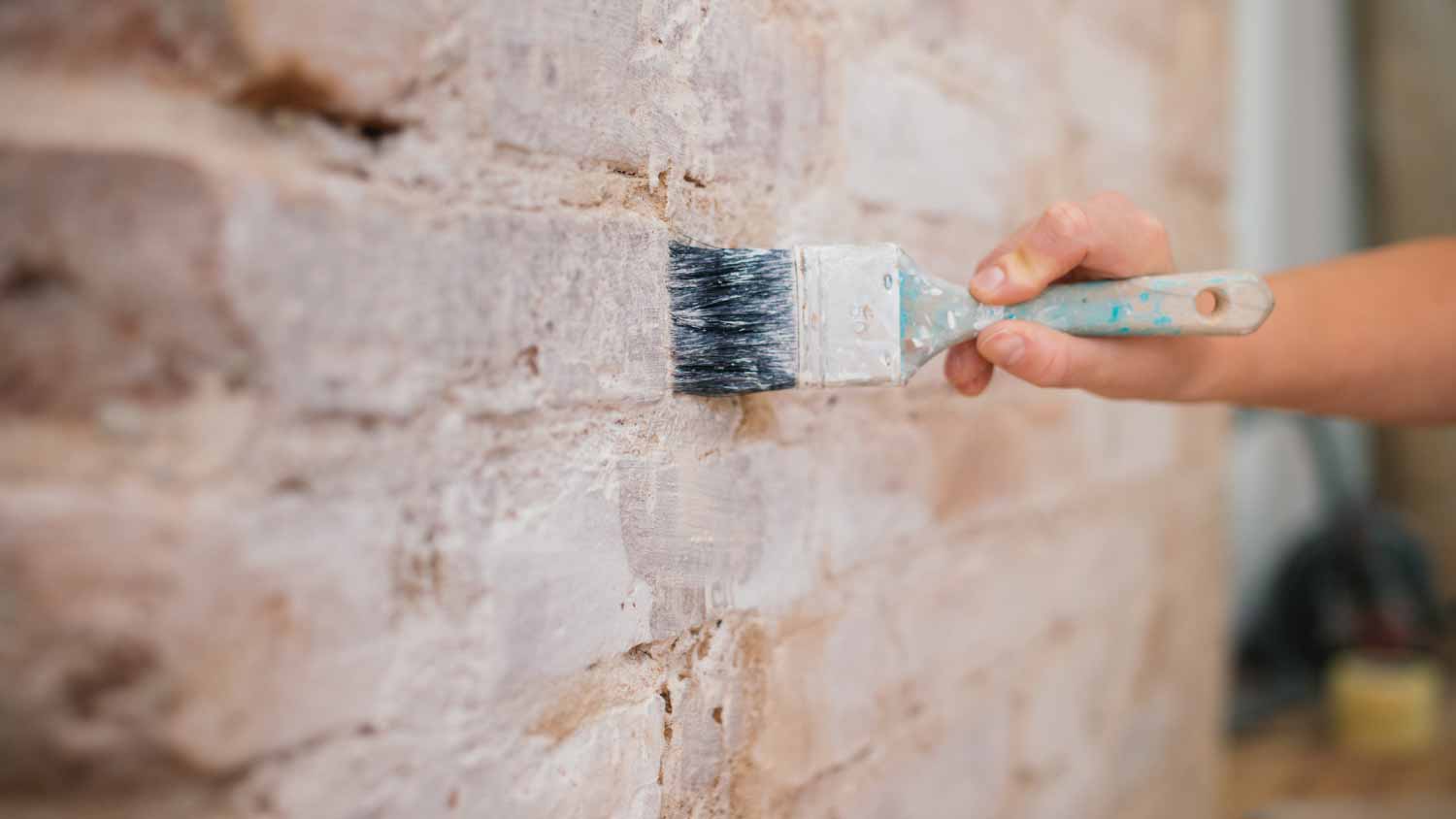
Wondering about the cost to paint a fireplace? Get a detailed guide to prices, key factors, and money-saving tips for your fireplace painting project.
Adding a touch of timeless elegance to your walls, one brushstroke at a time


Limewash paint has antibacterial properties.
Painted surfaces have matte, chalky, and often textured surfaces.
The paint is appropriate for indoor and outdoor use.
Limewash works best on unsealed masonry surfaces.
In the ever-evolving world of home improvement, where trends constantly shift, there's a timeless allure to limewash painting. It offers a distinctive chalky and textured appearance that melds old-world charm with modern sensibilities. If you're wondering, “What is limewash paint?” here’s what to know before selecting colors or hiring a professional painter.
Limewash paint boasts a rich heritage dating back centuries. The paint utilizes lime-based mixtures to both protect and adorn walls. With roots tracing back to ancient Egypt and Mesopotamia, lime was prized for its durability and antibacterial properties. For example, many farmers in the U.K. use limewash paint to clean areas for lambing.
It is a reasonably simple yet time-honored recipe. The key ingredients for limewash paint are lime, water, and, optionally, additives for color or texture. The mixture is stirred thoroughly and usually aged for improved stability before being strained to remove lumps or impurities. The last step helps ensure a smooth and consistent paint application.
To apply limewash paint to walls, use a brush, roller, or sprayer, depending on the desired finish and surface. Apply the paint in thin coats, allowing each layer to dry before applying the next. Multiple coats may be necessary to achieve the desired opacity and coverage.

Limewash paint has a variety of uses and applications due to its unique properties and aesthetic qualities.
Limewash paint is ideal for porous stone or lime-rendered surfaces, especially for historic or traditional structures. It provides a breathable, weather-resistant coating that helps protect the underlying surface while allowing moisture to evaporate, preventing issues such as dampness and mold.
Limewash is also appropriate for interior walls. Its matte, chalky appearance adds a rustic yet elegant touch to the interiors, creating a cozy and inviting atmosphere. Limewash paint is especially popular with fans of Mediterranean or farmhouse-style aesthetics. If you’re looking into hiring an interior painter, ask if limewash is one of their offerings.
Limewash highlights architectural features such as arches, columns, and moldings, adding visual interest and dimension to a space. Its subtle variations in color and texture help accentuate the unique characteristics of these elements. If you’re in the midst of choosing an accent wall, limewash might be of help.

Using limewash paint offers several advantages and disadvantages, which are essential to consider before deciding whether it's the right choice for your project.
Pros:
Natural composition offers a breathable finish, preventing moisture-related issues
Timeless aesthetic with matte finish and subtle color variations adds charm
Longevity and durability with proper application and maintenance
Cons:
Unsuitable for non-porous surfaces like metal, glass, or plastic
Primer recommended for painting drywall
May not provide adequate protection in high moisture areas or heavily trafficked walls
Consulting a professional or conducting a test patch can help you decide if limewash paint is right for you.
To compare limewash vs. paint, let’s consider the composition, appearance, and properties of each.
Composition: Unlike paint, limewash does not consist of synthetic binders or resins but natural materials, including hydrated lime, water, and optional additives like pigments for color or aggregates for texture.
Appearance: Traditional paint comes in various finishes, including matte, satin, eggshell, semi-gloss, and gloss, while limewash is chalky and matte.
Properties: Limewash paint is breathable, allowing moisture to evaporate from the substrate, while traditional paint may or may not be breathable, depending on the type and formulation.
If you’re looking to apply limewash paint to a fireplace, you’re not alone. According to Angi data, 8% of homeowners tackling smaller painting and staining projects are looking to paint their fireplace. Repainting the fireplace can breathe some new life into your space and create a new focal point.
Maintaining limewash paint is fairly simple as it is water-based. You can dust off surface debris from limewash-painted walls with a dry cloth, and any stains or marks can be wiped off with warm, soapy water. For bigger fixes, just make sure to clean the surface area before you re-paint them.
Similar to standard types of paint, a gallon of Limewash ranges from $25 to $100 per gallon. Additional materials, including brushes, rollers, sprayers, and a ladder, can reach upwards of $300, depending on the equipment you already own.
The cost to DIY depends on whether you're painting the exterior or an interior room, the quality of paint chosen, the need for additional supplies, and whether any preparation or repairs are required.
If you're looking to hire a local interior painter, services often range from $1,000 to $2,900, equating to about $2.00 to $6.00 per square foot. Conversely, the average cost for exterior house painting is $3,737. Your specific project and location influence your total expenses.
Limewash is applied in thin coats using a brush, roller, or sprayer. It penetrates the substrate and dries quickly, requiring multiple coats for full coverage, more so than with traditional paint. The extra work will add to your out-of-pocket costs.
From average costs to expert advice, get all the answers you need to get your job done.

Wondering about the cost to paint a fireplace? Get a detailed guide to prices, key factors, and money-saving tips for your fireplace painting project.

The cost to paint the interior of a house depends on size, layout, type of surface, and more. Learn what factors can influence your total in this guide.

The cost to remove texture from walls depends on square footage and the type of texture. Learn all the factors that will impact your budget in this guide.
.jpg?impolicy=leadImage)
Painting a room is more than just putting a fresh coat on walls. Before you start, you’ll want to know how to paint crown molding, trim, ceilings, and more.

There are many alternatives to painting brick walls, including staining and whitewashing. Learn more about different methods for bringing new life to your brick space.

Looking to refresh your living space but overwhelmed with the color options? Check out these popular paint colors to for some inspiration.